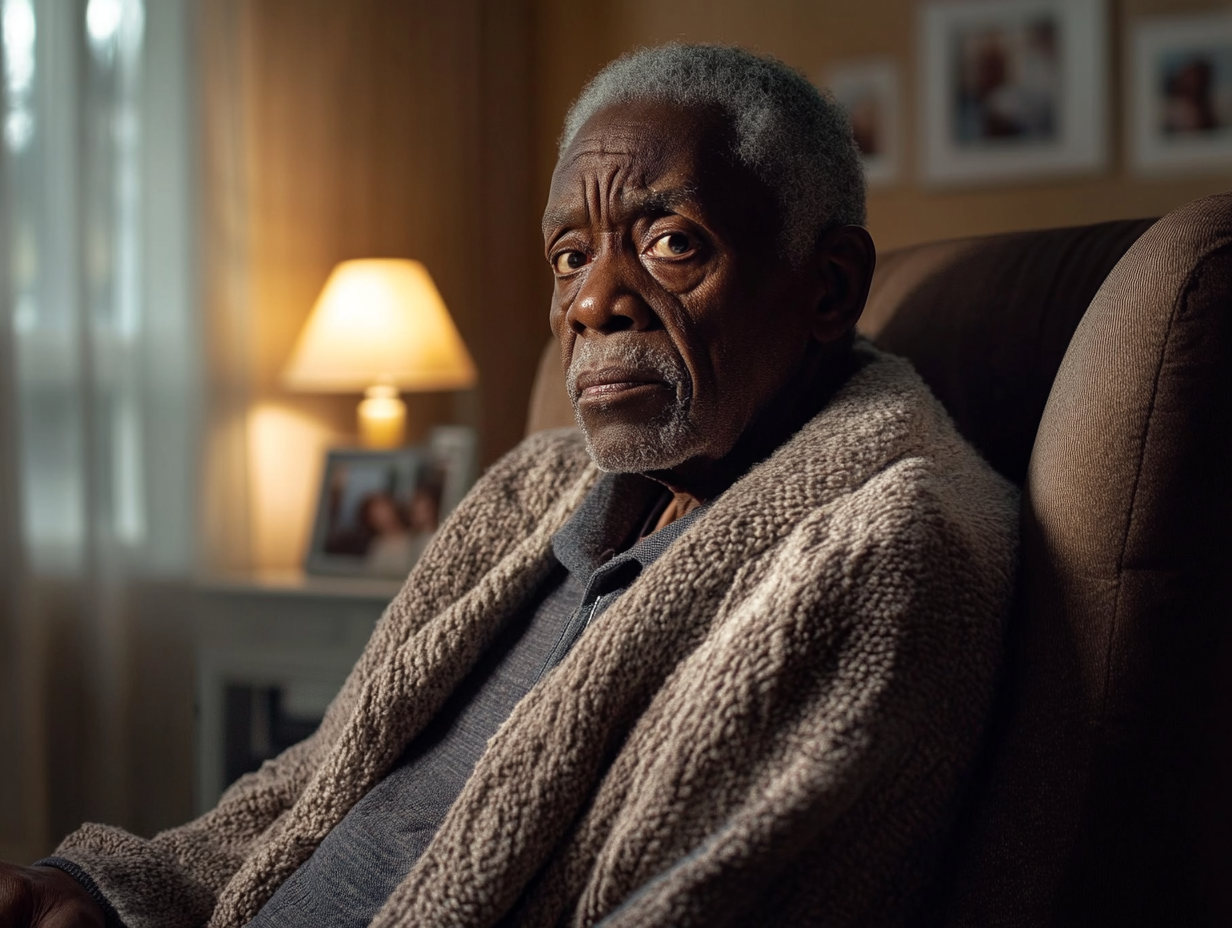The slight tremor in your grandmother’s hand when a particular caregiver enters the room. The curious timing of new estate planning documents. The recurring urinary tract infections that never quite get explained. These subtle signals might be trying to tell you something far more troubling than the normal challenges of aging—they could be indicators of elder abuse hiding in plain sight.
While dramatic bruising or large unexplained withdrawals might trigger immediate concern, elder abuse often manifests in quieter ways that families misattribute to normal aging or health decline. This misidentification allows mistreatment to continue, sometimes for years, as subtle warning signs are repeatedly dismissed or rationalized away.
Let’s explore the easily missed indicators of elder abuse that might be telling you something is wrong long before more obvious signs appear, and why recognizing these early warnings could make all the difference for the older adults you love.
The psychological withdrawal everyone misses
One of the earliest and most frequently overlooked signs of elder abuse appears in subtle changes to an older adult’s emotional demeanor and social engagement. Unlike obvious fear or anxiety, these changes often develop gradually and can easily be misinterpreted as part of normal aging or depression.
Watch for unexplained withdrawal from previously enjoyed activities, particularly when it coincides with new caregiving arrangements or living situations. Your once-social father who gradually stops attending his weekly card game or your mother who suddenly loses interest in church activities might not be experiencing normal disengagement but rather responding to abusive dynamics they feel unable to discuss directly.
Changes in communication patterns deserve particular attention. An elder who becomes noticeably quieter when certain individuals enter the room, who appears to self-censor during conversations, or who seems unnaturally concerned about being overheard may be adapting to threatening circumstances rather than simply becoming more introverted with age.
What makes these psychological indicators particularly easy to miss is how they can mimic other conditions. Symptoms that might be attributed to cognitive decline, grief, or adjustment to life changes could actually represent psychological responses to mistreatment. The key difference often lies in the situational nature of these changes—occurring around specific people or in specific environments rather than consistently across all contexts.
The financial discrepancies hiding in plain sight
Financial exploitation represents one of the most common forms of elder abuse, yet its early indicators often go unrecognized until substantial harm has occurred. While large bank withdrawals or missing valuables might eventually trigger concern, the initial signs typically appear in much subtler patterns that families rationalize or overlook entirely.
New or unexplained financial strain offers an important early warning. When an elder who has always managed comfortably on their income suddenly can’t afford normal expenses, appears to be cutting back unnecessarily on essentials, or mentions vague financial pressures, these changes warrant closer examination rather than simple attribution to memory lapses or poor budgeting.
Watch for misalignment between financial activity and lifestyle. Bills for services or items that don’t appear to benefit the elder, subscriptions to multiple similar services, or new accounts they seem confused about could indicate someone else is directing financial decisions for their own benefit rather than your loved one’s welfare.
Perhaps most easily missed are changes to financial routines and permissions. A mother who has always handled her own banking but suddenly “prefers” someone else to manage it, new individuals added to accounts for reasons that aren’t clearly necessary, or financial discussions that trigger anxiety rather than normal engagement all suggest potential exploitation developing behind a facade of assistance.
The medical red flags doctors might miss
Healthcare settings provide crucial opportunities to identify elder abuse, yet even medical professionals frequently overlook its subtler indicators. For families, recognizing these medical red flags becomes even more challenging without clinical training, leading to missed opportunities for intervention.
Recurring injuries with inconsistent or implausible explanations deserve particular scrutiny. While a single bruise might reasonably result from reported clumsiness, patterns of similar injuries over time—especially with explanations that shift or seem disproportionate to the injury—suggest a more concerning underlying cause than simply “bumping into things.”
Medication discrepancies offer another frequently missed indicator. Prescriptions that run out too quickly or last too long, unexplained changes in medication effectiveness, or an elder who seems over-medicated at certain times but not others might indicate medication mismanagement or even deliberate misuse by caregivers seeking to control behavior.
Patterns of healthcare utilization often contain embedded warnings. Frequent emergency room visits followed by resistance to recommended follow-up care, unexplained delays in seeking treatment for serious conditions, or different providers giving inconsistent accounts of an elder’s health status all warrant further investigation rather than attribution to normal healthcare challenges.
The hygiene changes that tell hidden stories
Changes in personal appearance and hygiene often contain important clues about an elder’s care situation, yet families frequently attribute these changes to normal aging or diminished self-care abilities without considering more troubling explanations.
Weight loss represents one of the most physically visible yet often misinterpreted indicators. While some weight loss can accompany aging or illness, unexplained or rapid weight changes—particularly when an elder has caregiving support for meals—might indicate food restriction, neglect, or even deliberate malnourishment rather than natural appetite changes.
Body odor and soiled clothing may be uncomfortable to acknowledge but contain important information about care quality. When an elder who previously maintained good hygiene presents with consistent cleanliness issues despite having caregiving support, this discrepancy suggests their basic needs are being overlooked or deliberately neglected rather than reflecting their own self-care limitations.
Inappropriate clothing for weather conditions often goes unquestioned but can reveal serious neglect. An elder consistently underdressed for cold weather or overdressed in heat may be experiencing restricted access to appropriate clothing, improper laundry services, or caregiver inattention to basic comfort and safety needs that extend beyond this immediately visible sign.
The environmental warnings in their living space
An elder’s living environment contains countless subtle indicators of potential mistreatment that visitors might notice but misattribute to benign causes. Learning to recognize these environmental red flags can reveal abuse situations long before more obvious signs develop.
Restricted access to basic necessities within the home deserves immediate attention. Finding food, water, medications, phones, or mobility devices placed out of reach for an elder with limited mobility suggests controlling behavior rather than careless placement, particularly when it occurs consistently rather than occasionally.
Unexplained modifications to living spaces sometimes indicate attempts to isolate or control. New locks on exterior doors, removed telephone lines, disabled call buttons, or security cameras focused on the elder rather than entry points might be presented as “safety measures” but function primarily as control mechanisms limiting the elder’s autonomy and access to outside help.
The absence of expected items often provides more revealing information than what’s visibly present. Missing glasses, dentures, hearing aids, or mobility devices that the elder previously used consistently suggest either neglectful care or, more troublingly, deliberate removal of items that facilitate independence and communication with others.
The caregiver interactions that signal trouble
The dynamic between elders and their caregivers—whether family members or professionals—contains numerous subtle indicators of potentially abusive relationships that observers might notice but struggle to definitively interpret as problematic.
Watch for caregivers who consistently answer for elders during conversations, interrupt their attempts to speak, or contradict their statements. While occasionally helping with communication can be appropriate, patterns of speaking over or correcting an elder suggest controlling behavior that likely extends beyond the immediately observable interaction.
Resistance to privacy during conversations represents another easily missed warning. Caregivers who refuse to leave the room during medical appointments, who monitor phone calls, or who appear unnecessarily concerned about what an elder might say to others are often attempting to prevent disclosure of mistreatment rather than providing supportive care.
Pay attention to how caregivers discuss the elder when they believe they’re speaking privately. Consistently negative characterizations, expressions of burden or resentment, or discussions of the elder as though they lack personhood offer important insights into attitudes that likely manifest in problematic care behaviors when others aren’t present to observe.
The social isolation that builds gradually
Progressive isolation represents one of elder abuse’s most effective enabling mechanisms, yet its development often occurs so gradually that families fail to recognize the systematic disconnection happening before their eyes.
Increasing difficulty making direct contact with an elder should trigger immediate concern. Calls that always go to voicemail, visits that get rescheduled repeatedly, or communication that must always flow through a caregiver rather than directly with the elder may indicate deliberate interference rather than innocent communication challenges.
Watch for explanations that don’t quite add up regarding an elder’s absence from family events or regular activities. While health limitations certainly can affect participation, patterns of last-minute cancellations, vague explanations, or reasons that seem inconsistent with the elder’s observed condition suggest their social connections are being deliberately limited rather than naturally changing.
Pay particular attention when longtime friends or regular visitors express concern about new barriers to access. These individuals often notice subtle changes in visit restrictions, communication limitations, or the elder’s freedom to engage that family members might miss due to their different relationship context or less frequent contact patterns.
The inconsistent stories that reveal truth
Perhaps the most commonly overlooked indicator of elder abuse lies in the narrative inconsistencies that emerge when comparing different accounts of the same situations—inconsistencies often rationalized away rather than recognized as important warning signals.
Listen carefully when injuries or incidents get explained differently to different people. When a bruise is attributed to a fall when speaking to family but to bumping against furniture when speaking to medical providers, this discrepancy suggests a manufactured explanation rather than an accurate account of what actually occurred.
Watch for evolving timelines that shift to accommodate questioning. When details about when symptoms began, how injuries occurred, or why financial transactions were made change as more specific questions are asked, these adjustments often indicate fabricated explanations being refined rather than simple memory confusion.
Pay attention when documented realities contradict provided narratives. Medical records showing different medication administration than what caregivers report, bank statements revealing transactions that don’t align with described financial activities, or physical evidence inconsistent with offered explanations all provide objective counterpoints to potentially fabricated accounts.
Recognizing these subtle indicators of elder abuse requires looking beyond surface explanations to identify patterns that suggest something more concerning than normal aging challenges. By understanding these easily missed warning signs, you gain the ability to intervene earlier, potentially sparing your loved one from escalating harm and helping them reclaim the safety, dignity and respect they deserve.















